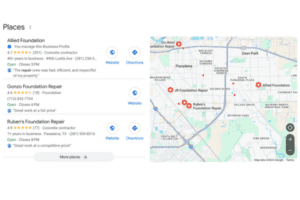Search engine optimization (SEO) is the process of optimizing your website to rank higher in search engine results pages (SERPs) for relevant keywords and phrases. Effective SEO can help drive more organic traffic to your website and increase your visibility online. In this blog, we’ll explore some of the best SEO steps to take to improve your website’s search engine ranking.
- Conduct Keyword Research – Keyword research is the process of identifying the keywords and phrases that your target audience is using to find information related to your business. This research helps you identify the most relevant and high-volume keywords that you can target with your content. There are various tools available online to conduct keyword research, including Google Keyword Planner, SEMrush, Ahrefs, and more.
- Optimize On-Page Content – On-page optimization includes all the actions you take on your website to improve its search engine ranking. This includes optimizing page titles, meta descriptions, headers, and content. Make sure your content is relevant to your target audience and contains the keywords you identified during your research. Additionally, ensure your content is well-written, informative, and engaging to readers.
- Improve Page Load Speed – Page load speed is an important factor for SEO as it affects the user experience. A slow loading website can result in high bounce rates, which can negatively impact your search engine ranking. Use tools like Google’s PageSpeed Insights to identify any issues that may be slowing down your website and take steps to optimize your website’s loading speed.
- Build High-Quality Backlinks – Backlinks are links from other websites that point to your website. High-quality backlinks from reputable websites can help improve your website’s domain authority and search engine ranking. You can acquire backlinks by creating high-quality content that other websites will want to link to, participating in guest blogging, and more.
- Utilize Social Media – Social media can help improve your website’s visibility and drive more traffic to your website. Share your content on social media platforms like Facebook, Twitter, and LinkedIn to increase its reach. Additionally, engaging with your followers can help improve your brand’s reputation and drive more traffic to your website.
- Monitor Your Website’s Performance – Monitor your website’s performance regularly to identify any issues that may be negatively impacting your search engine ranking. Use tools like Google Analytics to track your website’s traffic, bounce rate, and other important metrics. Additionally, monitor your website’s backlinks to ensure they are high-quality and relevant.
- Optimize for Mobile Devices – Mobile optimization is crucial for SEO as more and more people are using mobile devices to search for information online. Make sure your website is mobile-friendly and loads quickly on mobile devices. You can use Google’s Mobile-Friendly Test tool to check if your website is mobile-optimized.
- Use Structured Data – Structured data helps search engines understand the content on your website better. This can help improve your website’s visibility in search engine results pages. You can use tools like Google’s Structured Data Markup Helper to add structured data to your website.
- Improve Your Website’s User Experience – A positive user experience can help improve your website’s search engine ranking. Make sure your website is easy to navigate, loads quickly, and provides valuable information to users. Use heat mapping tools like Hotjar to identify any areas of your website that may be causing usability issues.
- Monitor Your Competitors – Monitoring your competitors can help you identify opportunities to improve your website’s SEO. Use tools like SEMrush or Ahrefs to track your competitors’ rankings, backlinks, and content strategies. This information can help you identify areas where you can improve your own website’s SEO.
- Use Local SEO – If you have a local business, optimizing your website for local SEO can help improve your visibility in local search results. This includes optimizing your Google My Business profile, using local keywords, and building local backlinks.
Overall, implementing these SEO steps can help improve your website’s search engine ranking and drive more organic traffic to your website. Remember that SEO is an ongoing process, and it’s important to stay up-to-date with the latest trends and best practices to ensure your website stays ahead of the competition.
In conclusion, SEO is an ongoing process that requires regular attention and optimization. By following these steps, you can improve your website’s search engine ranking and drive more organic traffic to your website. Remember to stay up-to-date with the latest SEO trends and best practices to ensure your website stays ahead of the competition.















